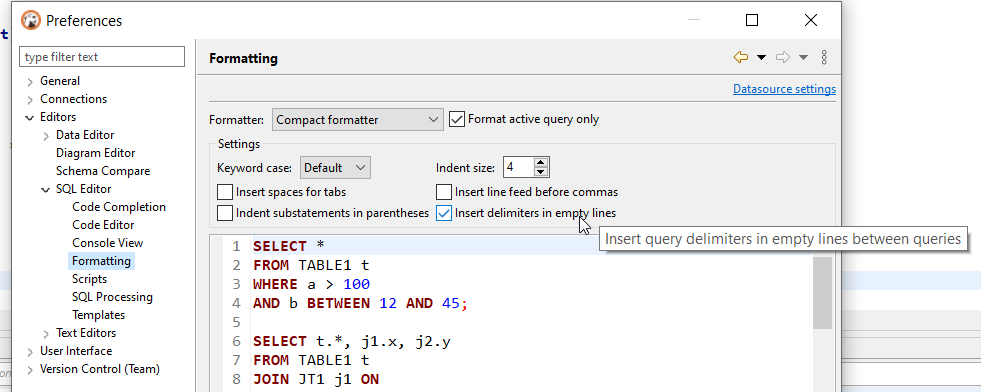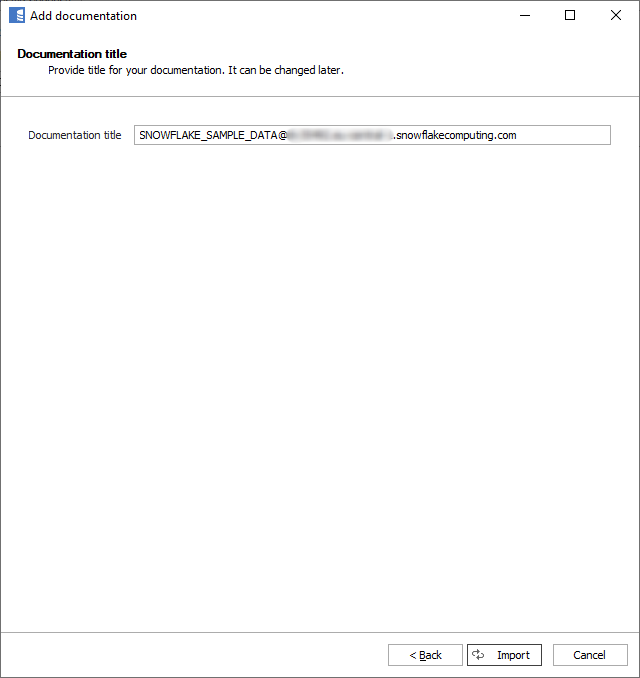
Setting "SSL" to off only disables encryption on your local machine.
Dbeaver snowflake password#
Teleport ignores the provided password and the account name as internally it uses values from the Database Agent configuration. Switch to the "Advanced" tab, set any value (e.g., "teleport") for "account", and add a new record named ssl with value off (as with "Password", "account" is ignored while establishing the connection but required by your IDE): "Password" will be ignored but is required to create a data source in your IDE): Via Teleport and enter any value (e.g., "teleport") in the "Password" field (the value of Set the "Username" to match the one that you are assuming when you connect to Snowflake Next, set "Host" to localhost and "Port" to the port returned by the tsh proxy db command you ran earlier ( 2000 in the example above). In "Database Explorer" click the "add" button, pick "Data Source", and then pick "Snowflake": Tsh proxy db -tunnel -port 2000 snowflake Select the "User & Password" authentication option and keep the "Password" field In the DataGrip connection configuration menu, use your proxy's endpoint. Use the SQL Server Authentication option and keep the Password field empty:

In the DBeaver connection configuration menu, use your proxy's endpoint. Provided and be able to validate the certificate presented by your TeleportĬlick on the "Connect" button. On the "More Options" tab, set SSL to "Client and Server Validation" and set theĬA as well as the client key and certificate. On the "Hostname" tab, enter the hostname and port of the proxy you will use to On the "New Connection" panel, click on "Fill in connection fields individually". Once you are back in the "Connection Settings" window, click "Ok" to finish andĭBeaver should connect to the remote MySQL server automatically.
Dbeaver snowflake driver#
Using Teleport and uncheck the "Save password locally" box:Ĭlick the "Edit Driver Settings" button on the "Main" tab, check the "NoĪuthentication" box, and click "Ok" to save: In that same tab, set the username to match the one that you are connecting to Port as the one returned by the proxy command ( 62652 in the example above): In the newly-opened "Connection Settings" tab, use the Host as localhost and In the search bar of the "Connect to a database" window that opens up, type "mysql", select the MySQL driver, and click "Next": Right-click in the "Database Navigator" menu in the main view and select Create > Connection: Save the connection and connect to the database. Optionally, click "Test Connection" to verify connectivity: Paths to your CA, certificate, and private key files (see In the "SSL" tab, set "Use SSL" to Require and Verify Identity and enter the Name", "Hostname", "Port", and "Username": In the MySQL Workbench "Setup New Connection" dialog, fill out "Connection MySQL WorkbenchĪpplication that provides comprehensive MySQL administration and SQL development Then,Ĭlick on "Finish" to save the configuration.

Use the "Database native" authentication with an empty password:Ĭlicking on "Test connection" should return a connection success message.

This is 127.0.0.1:62652 in the example above (see the “Authenticated Proxy” To connect to your PostgreSQL instance, use the authenticated proxy address. If pgAdmin prompts youįor password, leave the password field empty and click OK. In the "SSL" tab, set "SSL Mode" to Verify-Full and fill in paths for clientĬertificate, key and root certificate from the configuration above:Ĭlick "Save", and pgAdmin should immediately connect. In the "Connection" tab, fill in the hostname, port, user and database name from In the "General" tab of the new server dialog, enter the server connection name: To configure a new connection, right-click on "Servers" in the main browser view

PgAdmin 4 is a popular graphical client for The displayed CA, Cert, and Key files are used to connect through pgAdminĤ, MySQL Workbench, and other graphical database clients that support mutual Name: example Host: Port: 3080 User: postgres Database: postgres CA: /Users/alice/.tsh/keys//certs.pem Cert: /Users/alice/.tsh/keys//alice-db/root/example-x509.pem Key: /Users/alice/.tsh/keys//alice


 0 kommentar(er)
0 kommentar(er)
